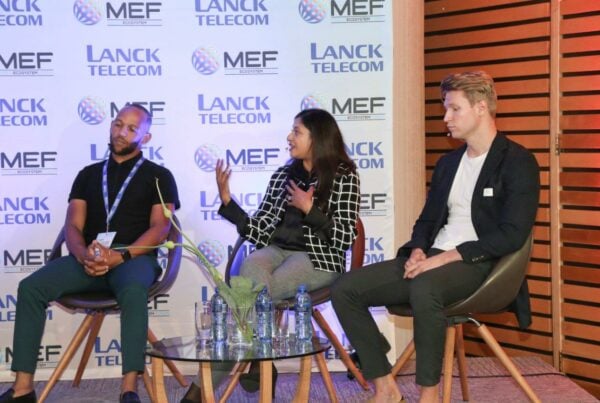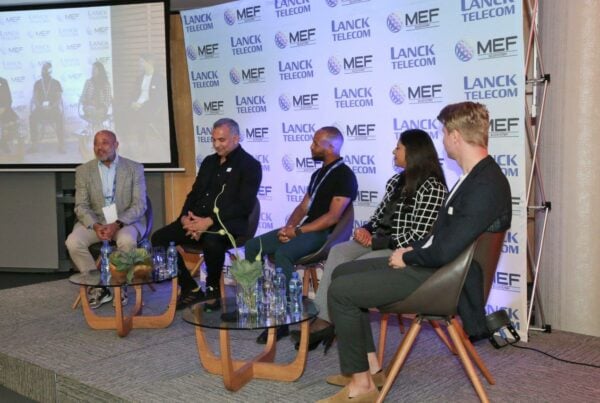There is a growing trend for big mobile brands to develop lite versions of their apps to hook mobile users in emerging markets. Just last month Shazam and Facebook Messenger announced that they are going lite for example.
The logic is straightforward. Unlike saturated established app economies, these markets are mobile first and represent the next billion in terms of connected mobile users. Importantly they typically have poorer network speeds and lower levels of disposable income so lite versions of apps are offered as a low data and cost solution.
We asked MEF members and the wider mobile community for their thoughts.

Bola Afuye, Head of Digital Media, Etisalat Nigeria
It makes sense that big mobile brands bring forward ‘lite’ versions of their apps for emerging markets. Connectivity remains an issue and the ‘cost’ of such connectivity is an issue that potential users continue to grapple with.
However, I prefer to question the use of ‘apps’ in the first place for markets like Nigeria. In my experience, without the comfort of being able to push apps over the air, driving up app downloads in this market is tough! (You can add expensive to that too).
For some reason, Nigerians prefer to access their digital needs from the confines of a URL that they can access on demand. My personal theory is that it allows them overall control of how their data is consumed. So I always advise young developers to go with a mobile responsive portal first! An app should only be considered as a nice to have.
Antoine Moreau, CEO at OLAmobile
I believe it is inevitable that lite apps will break open the app economy in emerging markets. There is huge potential in India, Latin America and Southeast Asia for developers to explore, as there is much less competition and penetration is cheaper since you can acquire new users with less effort and budget.
You can already see big players in the app industry exploring this [lite apps] – Facebook was one of the first – and developers everywhere should aim at grabbing this opportunity at an early stage. Developing for 2G networks and low-end devices with memory and space limitations should be looked upon as an alternative to an already app-cluttered ecosystem on non-emerging markets. Imagine it as suddenly realising you’re only present to 20 per cent of your potential audience. It’s that big of an opportunity.
Developers should also try to go as local as they can whether they are targeting emerging or other regions. If you’re not going for market fit, you’re not being smart about taking the best of this opportunity.
Jo Eyre, Senior Marketing & Communications Manager, Sub-Saharan Africa, Opera Software
With the price of smartphones declining, more people are able to access mobile apps. However, the cost of data remains prohibitively high for many so offerings such as lite apps, which can bring down these costs, are a step in the right direction.
Beyond lite apps, however, I believe that progressive web apps will see a significant uptake in the coming years. PWAs only take up a small amount of space on the device, which is important for entry-level smartphones with limited storage. They use less data than native apps and can offer an authentic online experience, offline – great for those in areas of poor coverage or for those who don’t want their data turned on constantly. Furthermore, PWAs don’t require users to go through the process of downloading, agreeing to terms etc.
Many African content and service providers are already experimenting with the technology. Local, relevant content is king so I’m excited to see where this will go.
Marco Veremis, CEO, Upstream
Lite apps help address the barriers of high data costs and internet connectivity limitations in high growth markets, making digital services more accessible. However, these steps still leave the issue of payment wide open. Creating a lite app while only offering credit/debit card based payment options won’t drive meaningful engagement or revenues, in mostly unbanked markets.
With payment card penetration as low as two per cent in Sub-Saharan economies, direct operator billing is the preferred and ubiquitous payment method, enabling consumers to use their airtime balance as a potent digital currency, to access high-quality services.
Digital brands also need to be mindful when approaching billing in emerging markets. The average airtime balance in growth markets can be as low as $2. Billing in small increments at weekly, or even daily, intervals can improve the percentage of successful transactions by up to 30 per cent. A critical step towards a profitable app economy.








